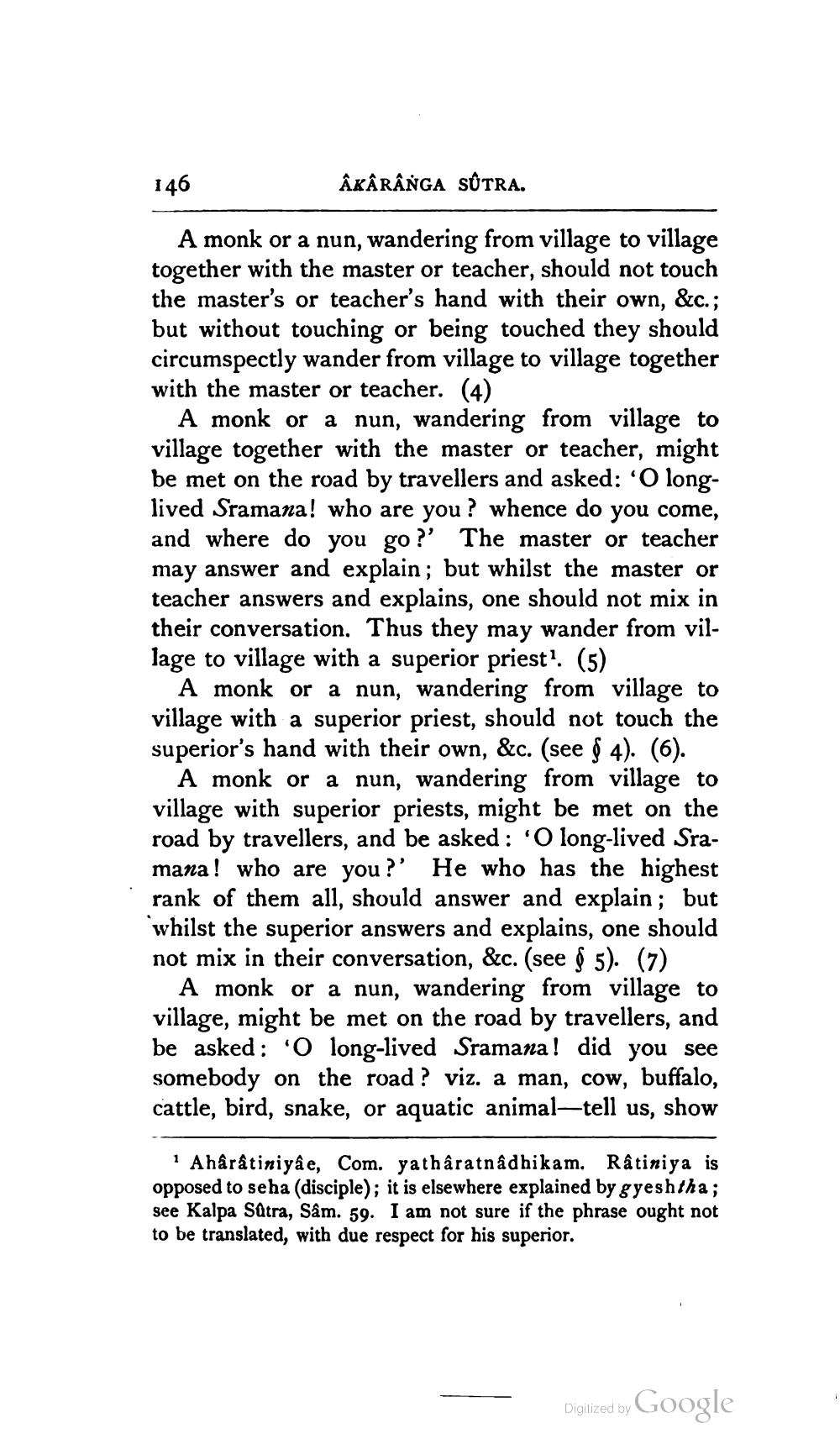________________
146
ÂKÂRÂNGA SÚTRA.
A monk or a nun, wandering from village to village together with the master or teacher, should not touch the master's or teacher's hand with their own, &c.; but without touching or being touched they should circumspectly wander from village to village together with the master or teacher. (4)
A monk or a nun, wandering from village to village together with the master or teacher, might be met on the road by travellers and asked: 'O longlived Sramana! who are you? whence do you come, and where do you go?' The master or teacher may answer and explain ; but whilst the master or teacher answers and explains, one should not mix in their conversation. Thus they may wander from village to village with a superior priest? (5)
A monk or a nun, wandering from village to village with a superior priest, should not touch the superior's hand with their own, &c. (see § 4). (6).
A monk or a nun, wandering from village to village with superior priests, might be met on the road by travellers, and be asked : 'O long-lived Sramana! who are you?' He who has the highest rank of them all, should answer and explain; but whilst the superior answers and explains, one should not mix in their conversation, &c. (see § 5). (7)
A monk or a nun, wandering from village to village, might be met on the road by travellers, and be asked: 'Olong-lived Sramana! did you see somebody on the road ? viz. a man, cow, buffalo, cattle, bird, snake, or aquatic animal—tell us, show
1 Ahârâtiniyâe, Com. yathâratnâdhikam. Ratiniya is opposed to seha (disciple); it is elsewhere explained by gyeshtha; see Kalpa Sutra, Sâm. 59. I am not sure if the phrase ought not to be translated, with due respect for his superior.
Digitized by Google




